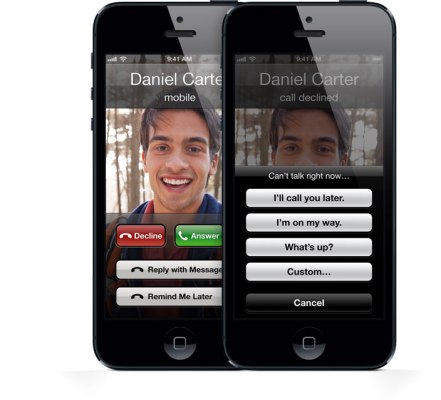Apple has been granted a new patent today (spotted by AppleInsider), called “Image selection for an incoming call” which describes a system for dynamically choosing an image to display for inbound caller ID, sourced from either a locally stored image library or a cloud-based gallery. It uses cues like contact info including phone numbers, and potentially also iMessage email addresses to see who’s reaching out, and then selects an image to display partly at random, and partly based on weighted scores assigned to the frequency of any one image’s use, star ratings, and even information about location, date and time.
It would be a small change, but a very neat one in practice. In theory, such a system would know to show you a picture of a friend at home in San Francisco if it detects that a call is coming from there. It could also show a snapshot of you and a significant other on vacation in New York City, if the phone detected that you were travelling there while receiving a phone call from home. The system can also display photos from approximately the same time of day as that of the origin call, which would actually be a handy visual shortcut to realize that someone on the other side of the world might be calling you very early in the morning or very early at night, regardless of what time it is locally.
The system also could pick pictures based on which ones you’ve rated highly via a star system like the one Apple uses in Aperture and iPhoto, and even describes being able to serve small video clips in place of static images where appropriate. You can imagine it being applied not only to incoming phone calls, but also to SMS, iMessage and FaceTime communications.
The patent was originally filed for in 2010, so Apple has had some time to work on the tech, and we haven’t seen any suggestion of its arrival in iOS as of yet. Patents are rarely good indicators of actual shipping product plans, but this is one that could put a unique, personal spin on a fairly standardized piece of the mobile phone experience, so here’s hoping we see some version of it make its way to Apple’s mobile devices.
